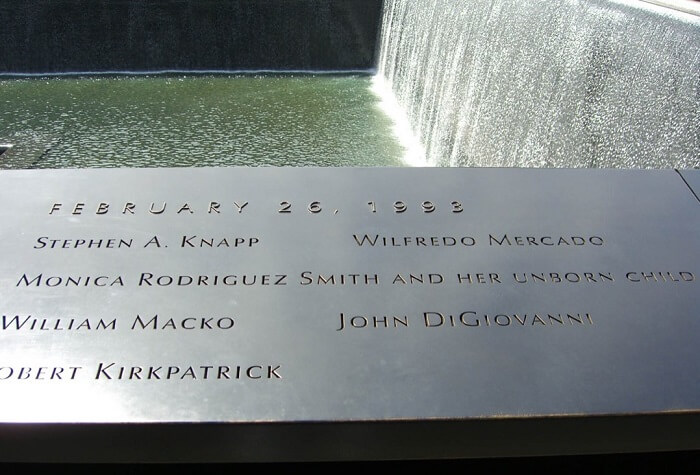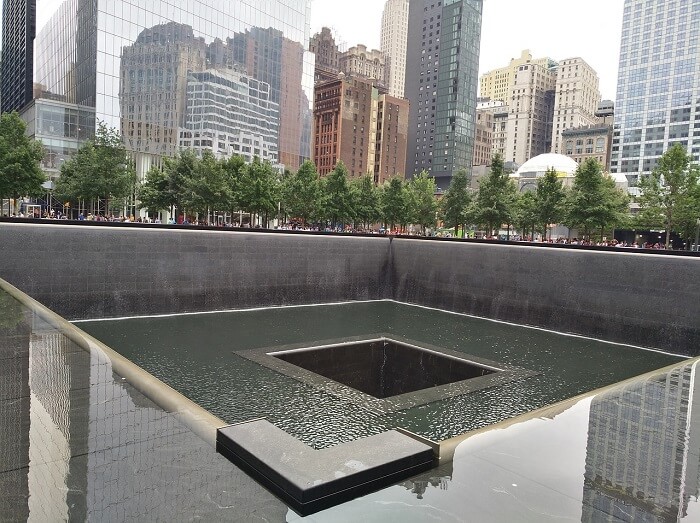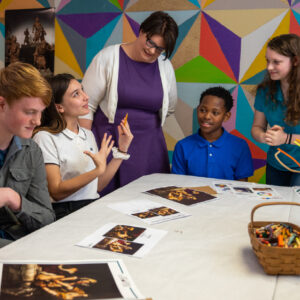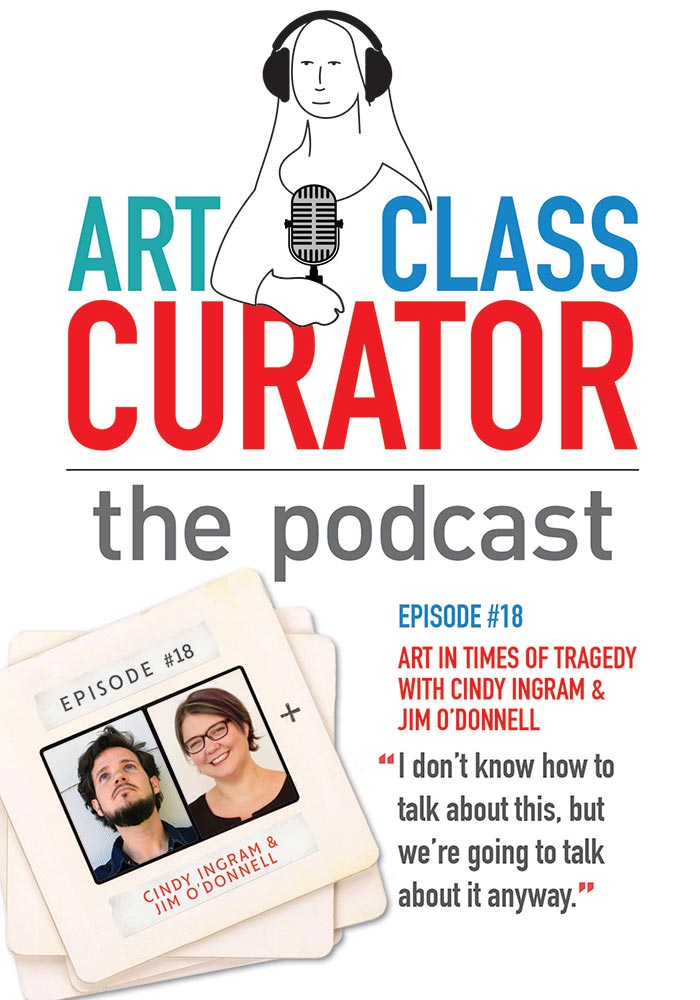Inside: September 11th lesson plans for art teachers focused on the 9/11 Memorial. Plus, the many reasons why it is important to teach about the attack in art class.

Your students have no memories of September 11, 2001.
It is easy to discount the amount of time that has passed for an event that looms so large in our own memories, but it’s true. The largest foreign attack on American soil in living memory is no more than a horrific story to our children. The wars it sparked continue, and it is important that our students have an understanding of the complicated cause and effect that the attack on the World Trade Center has had on their lives. The impact is so great that many of our students are likely to spend their lives fighting a war that started before they were born. Given that fact, it is vital that they connect with the event on a human level so that they can become better, more informed citizens.
9/11 Memorial
Choosing a time close to the anniversary for September 11th lesson plans helps add a sense of connection and history. Reflecting Absence, better known as the 9/11 Memorial and designed by Michael Arad & Peter Walker, offers an excellent opportunity to discuss how art is used to remember, educate, and heal.

Though most of us will never take a class to the 9/11 Memorial in person, the sensory impact is powerful even without visiting Ground Zero. Students can explore the Memorial on Google Maps. This video shares a personal story, as well as footage from and information about the 9/11 Memorial. You can share videos of the pools from both day and night so your classes can experience how the size and openness make you feel small but united and how the fall of the water drowns out the sounds of the city while encouraging quiet reflection.

The names of the men, women, and children killed in the attacks of September 11, 2001 and the 1993 World Trade Center bombing are inscribed in the bronze parapets bordering the twin Memorial pools. Each of the pools cover nearly an acre and are the largest manmade waterfalls in North America. The pools are simple, stoic, and deep, making it impossible not to consider the chasm left by those who died that day and the gravity of everything that followed.
September 11th Lesson Plans
There is no reason for September 11th lesson plans to be the sole purview of history class. Our students need more than dates and facts. They need faces, stories, and emotions. Art allows us to contextualise tragedy, personally connect with the past, and give meaning to our grief. Don’t hesitate to shape the lesson plans offered on the 9/11 Memorial website to fit your art classroom.
The pools could easily tie into a unit on historical memorials from the United States or around the world. Older students would benefit from designing their own memorial for 9/11 or another historical event.


Get the Full Lesson!
This Lesson is in The Curated Connections Library!
Find the full lesson from this post along with hundreds of other art teaching resources and trainings in the Curated Connections Library. Click here for more information about how to join or enter your email below for a free SPARKworks lesson from the membership!
Classroom Connection
A classroom art discussion about the 9/11 Memorial will allow students to connect with their peers and view the art from different perspectives. Here are some questions and suggestions to get you started:
- What is a memorial?
- Look at the photo of the monument and describe it.
- What choices did the artists make?
- Go through each element of the design and ask the students to discuss what emotional meaning and impact each part might have.
- How did the artists want you to feel when visiting this site?
- How would it feel to visit this site?
By asking our students to consider what a memorial is, as well as the emotional and historical purposes it serves, they are able to delve more deeply into their own reaction to both the art and the event itself.

Interpretation Activity
Even younger students will be able to appreciate and consider the sensory impact of the 9/11 Memorial, so it pairs well with The 5 Senses worksheet. Students explore the setting of the artwork through their imagined sensory experience. It’s a great way to add a writing component to your September 11th lesson plans.
You can get the worksheet as a part of the 25 Art Appreciation Worksheet Bundle or as one of the 6 free worksheets you receive when you sign up for our newsletter.


Free Worksheets!
Art Appreciation Worksheets
In this free bundle of art worksheets, you receive six ready-to-use art worksheets with looking activities designed to work with almost any work of art.
There are many ways to connect with the past and world events, but few offer the internal experience and external connections forged through public art and memorials. I hope you’ll take the time to expose your students to these artworks so that they may become more thoughtful, empathetic individuals.
This week on the podcast, I spoke about Art in Times of Tragedy. Have a listen:



